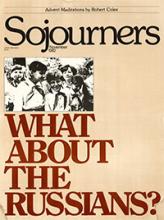The following is an excerpt from the first chapter of Nuclear Holocaust and Christian Hope by Ronald Sider and Richard Taylor. The book was released in 1982.
An instant after the one-megaton warhead exploded over Moscow a huge fireball burst upward. At its center the temperature was 150 million degrees Fahrenheit, more than eight times the heat at the center of the sun.
In central Moscow, life came to an end. The fireball itself was three-fourths of a mile wide. It vaporized steel and concrete buildings, roads and bridges, and hundreds of thousands of people. Mingled in a raging caldron, the structures and bodies--pulverized and reduced to cinders--were sucked up into a quickly forming, towering, mushroom-shaped cloud. Moments later, heavier rubble, now highly radioactive, fell back onto the flayed shambles below. Lighter particles rose with the mushroom cloud into the upper atmosphere, from which they would later descend as radioactive dust.
The American rocket, the first to break through Moscow's antiballistic missile system, was launched by Major Raymond Butts and Captain James Mercer, combat missile crewmen at the 390th Strategic Missile Wing, Malmstrom Air Force Base, Great Falls, Montana.
A year before World War III erupted, a Montana reporter had researched a newspaper story on U.S. rockets. The reporter had heard Major Butts in a chance remark describe himself as a Christian.
"How can you square your faith with the frightful power of these weapons?" the reporter asked. "You have more killing power at your fingertips than Alexander, Attila, Genghis Khan, Napolean, and Hitler combined!"
Read the Full Article

